A personal thought on positive safety improvements.
In order to produce the posts for this website, it is necessary to review safety incident reports, watch documentaries on disasters, read reports from the Federal Aviation Authority and study many more sources of relevant information. Often, my wife and family will ask, “why do you watch this? It is depressing, all those people died!”. In truth it is often difficult to read a report that provides detail of people losing their life, especially when the cause is all too often avoidable. However, there we find the key, the critical reason why those of us who do what we do, do what we do. When people lose their lives or are injured in an accident, the outcome is avoidable, not inevitable. If we don’t educate ourselves and learn from such incidents we will go on hurting people.
This post is dedicated to celebrating the successes of those who have investigated, learned from and shared the findings of incidents over the decades. Without such dedication today’s accident and incident rates would be far higher.
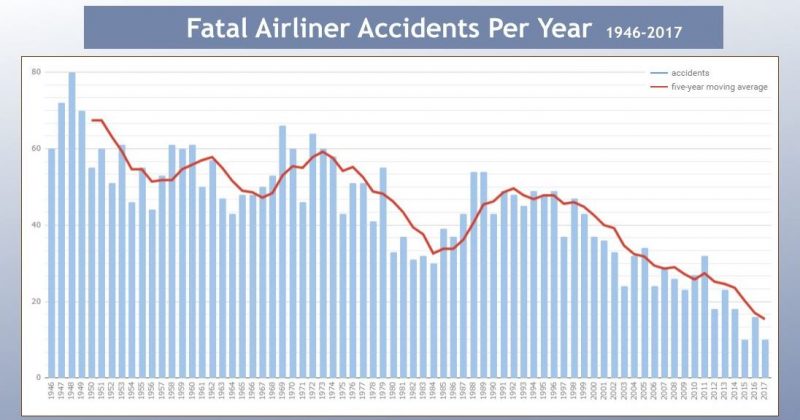
Statistics courtesy of the Aviation Safety Network
The above graph shows the number of fatal airliner accidents per year since 1946. You might think that there were so few airliners in the air in the 1940s that we must surely have more fatal accidents in modern times when people fly everywhere. Happily not. The number of fatal accidents today is significantly less that it has ever been. There has never been a safer time to fly. Remember, the impressive line above is against a massive increase in the number of flights. This phenomenal reduction is due to the amazing tenacity of the industry to investigate and report all findings from every accident. This allows preventative measures to be built into new aircraft design, procedures, rules, training and airport design. Investigations often involve people who have been involved in accidents going through traumatic recounting of their experience, investigators inspecting wreckage containing human remains and families of the deceased having to answer personal questions about the movements and behaviours of their loved ones. None of this is easy and often involves very long hours and thousands of miles of travelling to find the cause of accidents as soon as possible. Looking at the graph above, the results speak for themselves.
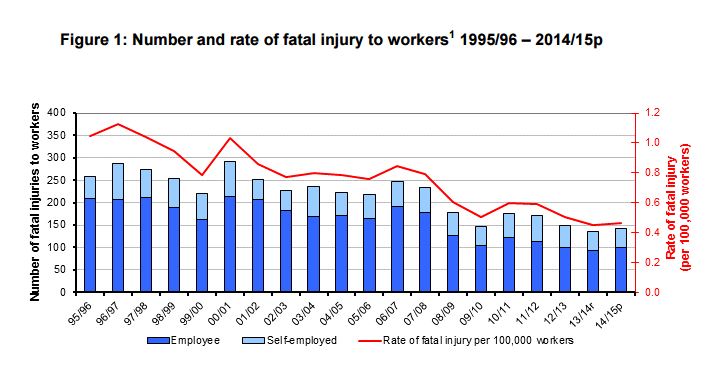
This next graph shows the number of fatalities resulting from workplace injuries in the UK. Here again we see a significant reduction over time. Despite a significant increase in population over the last 20 years (7 million additional people) we see a real and significant decrease in the number of fatal accidents. This is supported by a colossal reduction in the fatal injury rate, being less than half what it was in 1995. The 1990s saw the introduction of European regulations to further improve Health and Safety in the workplace. These regulations were supported by specific guidance on how to better manage risk at work. Reference to these documents is commonplace and almost everyone who works in the UK is aware of the requirements of such regulations. In more recent times we have seen companies adopting behavioural safety programs, focussing on the management of human behaviour to reduce accidents in the workplace. The combined effect of these measures has halved the likelihood of having a fatal accident at work. Our efforts in health and safety management have ensured that people go home from work in the same condition in which they arrive.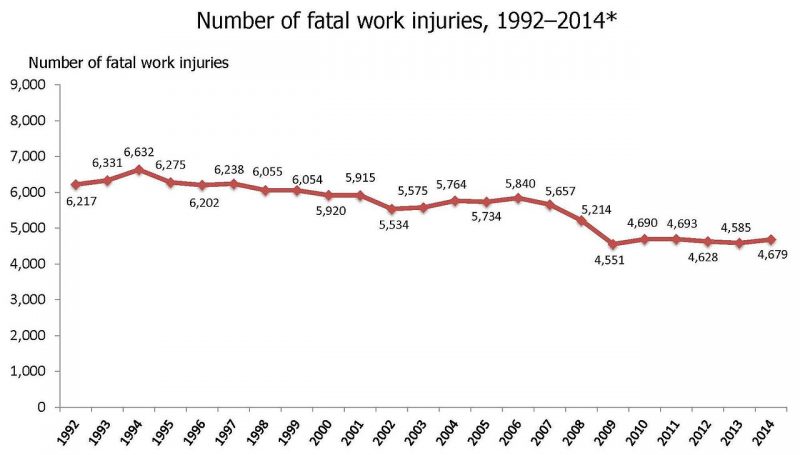 (Statistics courtesy of UK Health and Safety Executive). The story is much the same across the pond in the US. Although the decrease is not quite so dramatic, it is without doubt impressive. Fatal injuries have been reduced by roughly 25% over the last 20 years. Although not subject to the European regulations, the Americans have developed their own safety improvement measures and directives with a strong focus on heavy industry and petro-chemical sectors. The result is a significant reduction in accident rates across the board. Behavioural safety is a feature of American workplaces too with major employers having programmes in place. Motivational speakers such as Charlie Morecraft share their story with fellow Americans encouraging them to take responsibility for their own safety at work. Through such measures cultural change is palpable. Achieving behavioural change across such a geographical area with diverse cultures and communities is no mean feat. So let us take our hats off to our American friends and wish them more success in the future.
(Statistics courtesy of UK Health and Safety Executive). The story is much the same across the pond in the US. Although the decrease is not quite so dramatic, it is without doubt impressive. Fatal injuries have been reduced by roughly 25% over the last 20 years. Although not subject to the European regulations, the Americans have developed their own safety improvement measures and directives with a strong focus on heavy industry and petro-chemical sectors. The result is a significant reduction in accident rates across the board. Behavioural safety is a feature of American workplaces too with major employers having programmes in place. Motivational speakers such as Charlie Morecraft share their story with fellow Americans encouraging them to take responsibility for their own safety at work. Through such measures cultural change is palpable. Achieving behavioural change across such a geographical area with diverse cultures and communities is no mean feat. So let us take our hats off to our American friends and wish them more success in the future.
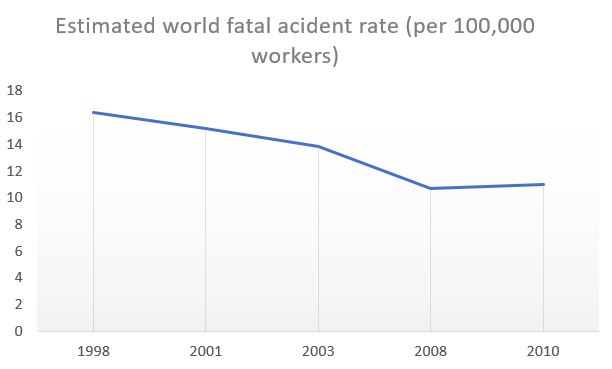
So how does improvement look throughout the world? Well, a reduction in accident rate is not limited to Europe and the US. Though statistics are not easy to come by, the WSH institute has performed meta analysis of available data and produced an estimate of fatal accident rates over time. The trend is clearly in the right direction. If we split the data between geographic areas it is clear that developing economies in Asia and Africa still have worryingly high rates of fatal work injuries. However, they are moving in the right direction and the overall trend is positive. Through sharing best practice and increasing the mobilisation of labour around the world we can move towards a level playing field where the very best safe working methods are employed consistently across the globe.
In the multi-media age, sharing our experiences and lessons learned has never been so easy. The result is rapid adoption of new safety practises that previously might have taken over a decade to spread around the world.
Wherever we look we find the story is the same. Significant reductions in accidents and fatalities at work. So how about our home life? Are we taking less risks and protecting ourselves at home?
Total number of road accident fatalities per million inhabitants, EU-28, evolution 2005-2014 Source Eurostat (transsfroadve) and national publications
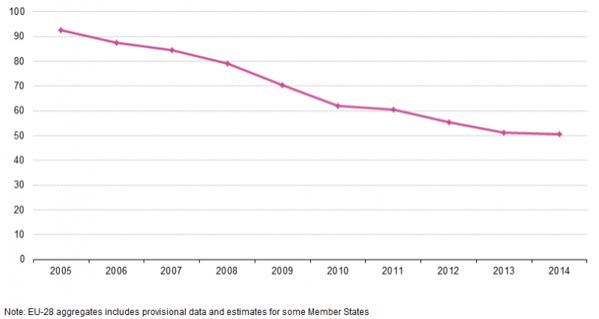
We are certainly less likely to die in a road accident. Advances in road safety and car design for both passengers and pedestrians have dramatically reduced the number of fatalities across Europe. This story is repeated across accidents in the home, sporting fatalities, fatalities from travelling on trains. We are getting safer across the board. Hopefully the following statement is not surprising news to you, but you are going to die. However, it is today far less likely that you will die in an accident than 20 years ago. So despite what you may read in the national press about faulty electrical goods, dangerous extreme sports and rogue employers; whilst simultaneously lamenting health and safety gone mad and unnecessary bureaucracy emanating from the European Parliament, I am pleased to report that health and safety hasn’t gone mad. Health and safety management is working across the world. So if you try something and it works well, what should you do? More of it! Let us rejoice in the successes of sensible, well considered and collaborative health and safety management and do much more of it in the year and years to come.
